Your hospital or medical facility is all about healing — on the inside.
But what about the outside?
A healing garden offers a place to rest, refresh, relax, and rejuvenate for patients on the road to recovery.
Bonus: It’s a great space for the patient’s family and visitors, too — and for employees who work in a stressful environment.
Add a therapeutic garden to your medical facility, and everybody wins.
Pamela Whitley, horticulturist at Michael Hatcher & Associates, shares the elements of a great healing garden design.
Why Have a Therapeutic Garden?
Plants, trees, and flowers boost positivity, reduce stress and anxiety, lower blood pressure, ease muscle tension, and boost positive attitudes.
When you’re in the hospital, you need all of that.
“Everything around you is tan or gray,” Whitley says. “You’re surrounded by hard surfaces, lights, beeping medical equipment. People are coming in to check on you. All that brings anxiety and stress. When you can go outside, that helps release all of that.”
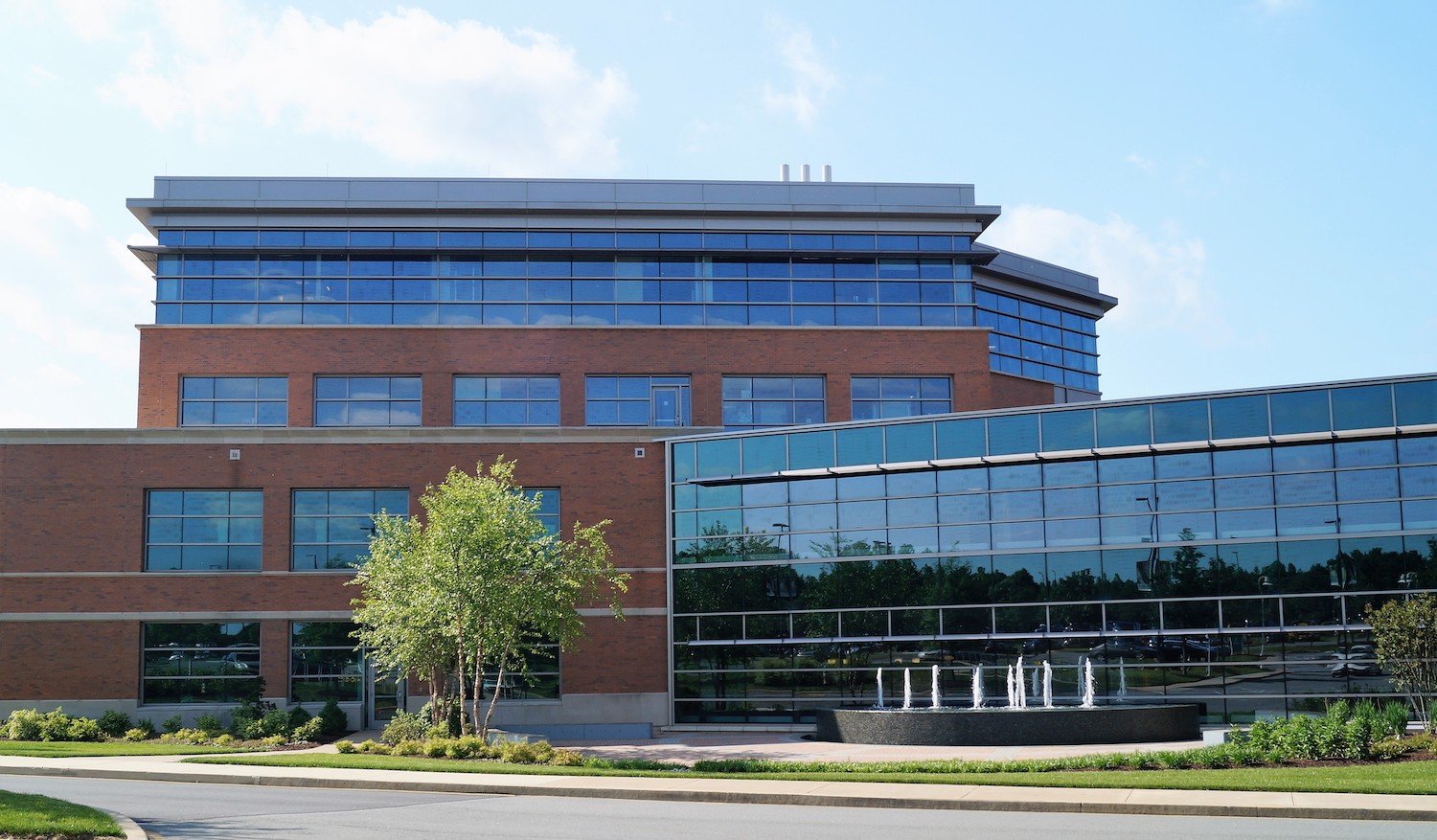
A green, peaceful environment can work wonders, she says.
“It takes your mind off what’s going on physically and emotionally,” Whitley says. “A place that feels calming and inviting occupies your mind in a visual way, and lets you step away from what’s bothering you.”
Here are some elements Whitley includes in healing garden design:
A Zen Meditation Space
Zen gardens use rocks and gravel or sand to recreate the essence of nature. Swirling patterns raked into the surface have a calming effect on the mind.
Raised Bed Planters
Raised beds allow access for patients in wheelchairs or who need to sit and rest.
They offer up-close peeks at flowers and plants, but they also can serve a therapeutic purpose, Whitley says.
Patients recovering from injuries or surgery on their hands or arms can plant seeds or cut flowers as part of their recovery.
In larger facilities where patients receive long-term care or assisted living, consider adding small garden plots they can tend, she says.
“Residents can have their own little plot to tinker with vegetables or flowers,” she says. “Connecting with nature makes people happy.”
Lots of Green
A therapeutic garden design needs areas of lush, green grass or verdant ground covers, Whitley says. Green is calming.
“People also like to see things in bloom,” she says.
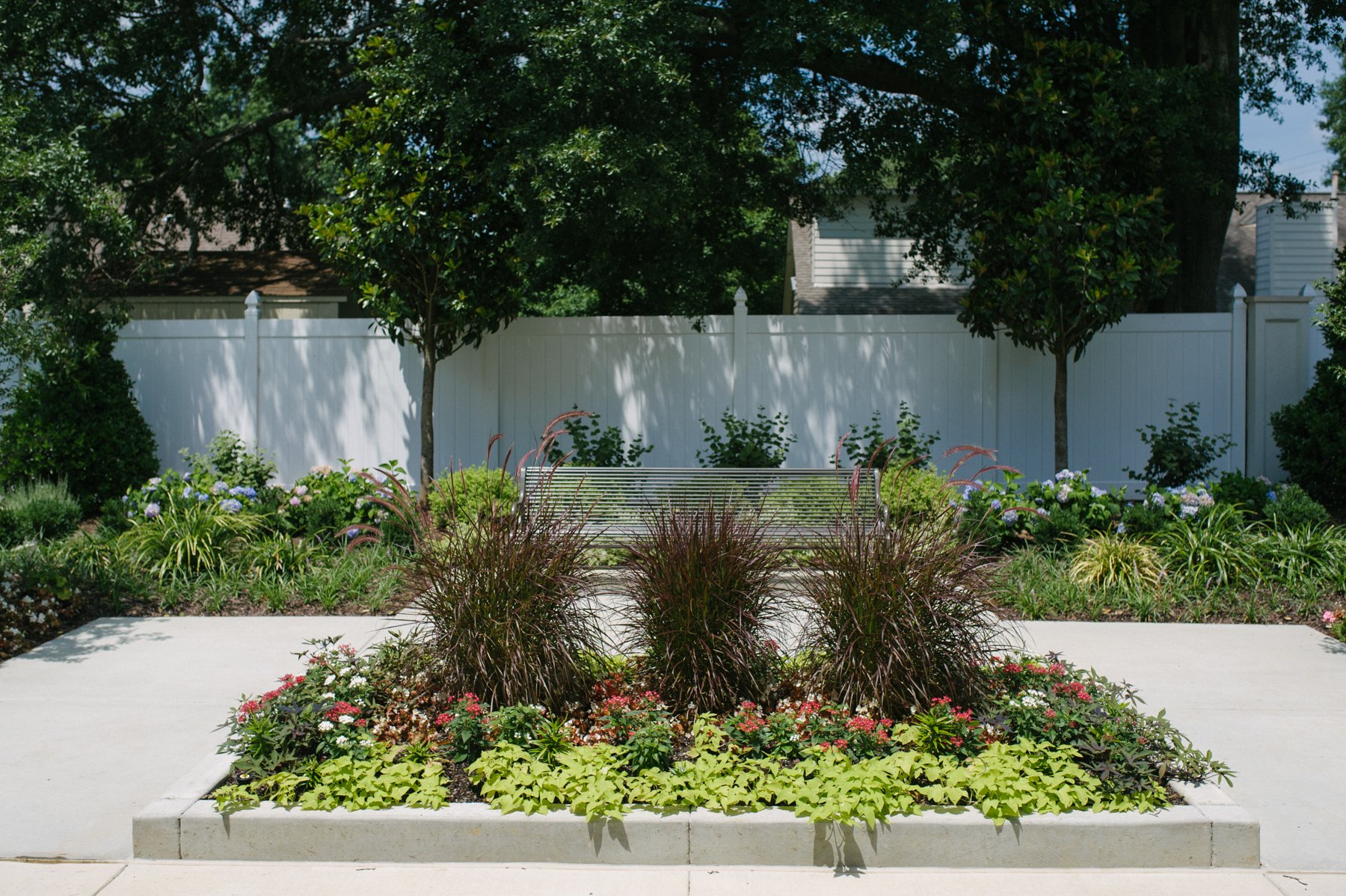
Plants to consider:
- Flowers with a pleasant fragrance, like gardenias
- Azaleas
- Perennials
- Annuals
- Hollies
- Ornamental grasses
Include a centerpiece tree or plant, Whitley suggests.
“You want a place for the eye to land,” she says. Japanese maples work well here.
While herbs, with their medicinal qualities, seem like a good choice, they’re not great for this purpose, Whitley says.
“Most healing gardens have lots of shade,” she says, “and herbs need full sun.”
Keep low maintenance in mind, Whitley says.
“You don’t want someone to have to tend the area 24/7.”
Places to Sit
Healing gardens are great areas for patients to visit with family, consult with their physicians or nurses and meet with visiting clergy, Whitley says.
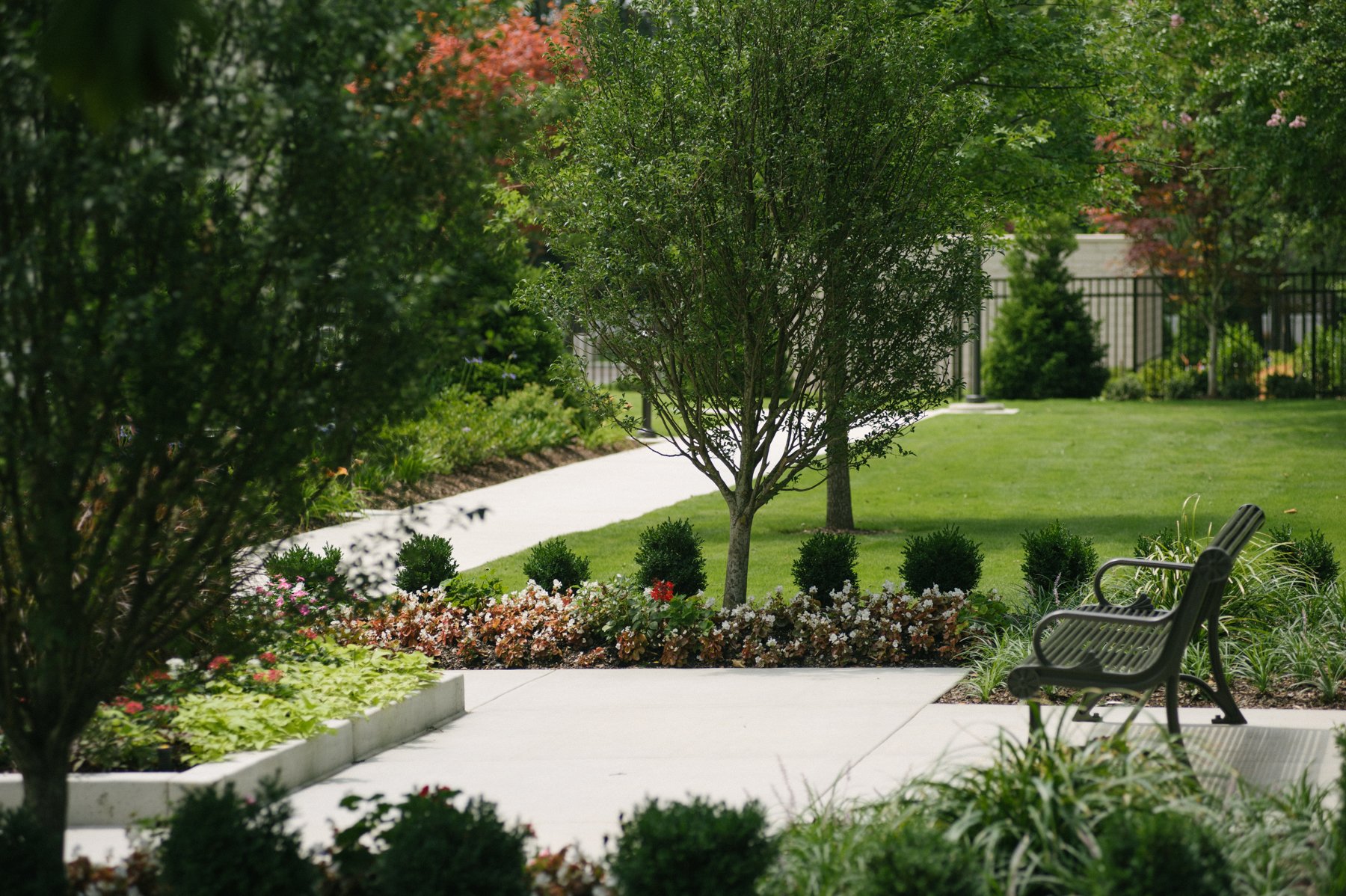
“As people walk through and get involved in conversation, they look for a place to sit,” she says.
Include benches and chairs in groups to accommodate three or four people.
Walkways and Paths
Healing gardens invite strolling, so include walkways and paths. Paths should be wide enough to accommodate wheelchairs and pedestrians strolling in pairs.
They should be smooth but slip-proof, easily walkable so they don’t impede wheelchair wheels or snag wheeled IV poles.
Keep in mind winding walkways are more appealing than a straight path.
Water Features
Everybody loves water. It soothes our souls, calms us down, captivates us.
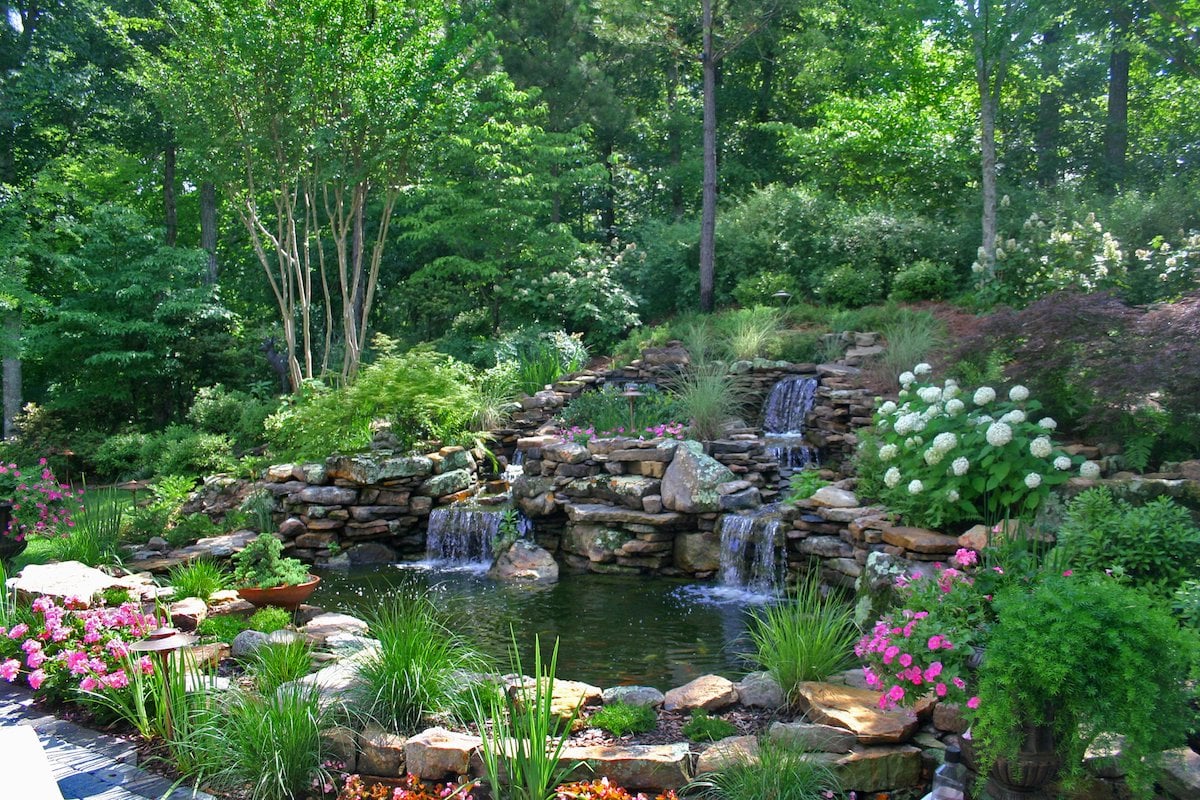
Consider water features as part of your therapeutic garden design. Add a fountain or small waterfall.
“Water offers white noise, and it’s calming,” Whitley says. “It’s very peaceful to watch water flow and hear it bubble.”
Shade
Bright, warm sun has its own way of healing, but here in the hot mid-South, we also crave shade.
Trees are a natural, but turn to gazebos, pergolas, and canvas shade sails to fill in, too.
Lighting
You want your therapeutic garden to get as much use as possible, so don’t forget landscape lighting.
Light the main features, from the zen garden to water features to cozy conversation nooks, and it becomes a restful spot even after the sun goes down.
Where to Locate a Healing Garden?
“Utilize any space you have,” Whitley says. “Some big facilities have multiple buildings arranged around a green space.”
Courtyards and atriums are natural choices, Whitley says, but you can even renovate part of a parking lot. Just be sure patients don’t need to cross traffic to get there.
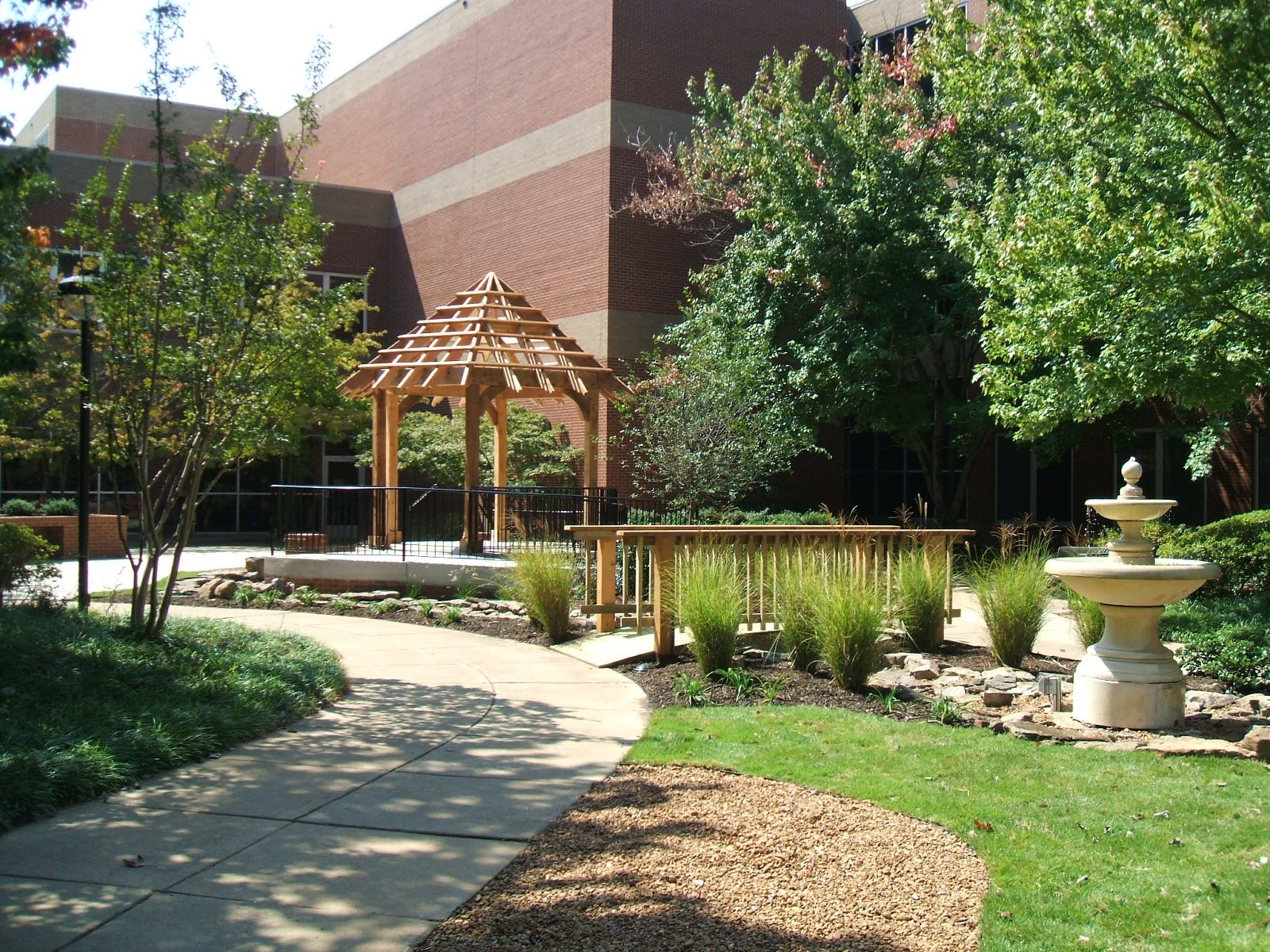
“Find little nooks,” she says. “It can even be on a rooftop, especially in a city, where there’s limited space.”
It doesn’t have to be huge.
“Some of the best conversations in life happen sitting on the front porch or back patio,” Whitley says. “That’s what you want to capture.”
Trust Hatcher with Your Healing Garden Design
Here at Michael Hatcher & Associates, we know how important a hospital visit is — and how to make your medical campus welcoming and peaceful.
Our skilled crews can add relaxing patios and seating areas, perfect pathways and calming greenery.
Then, we’re happy to stick around to keep it all perfectly maintained.
Watch This Video to Learn How We Help Hospitals & Medical Facilities
Ready to boost your property’s healing power? Talk to one of our commercial landscaping experts today! We’ll meet at your property, create a custom plan, and get you on your way to enjoying a beautiful, worry-free property.


